The story behind your LOOK products
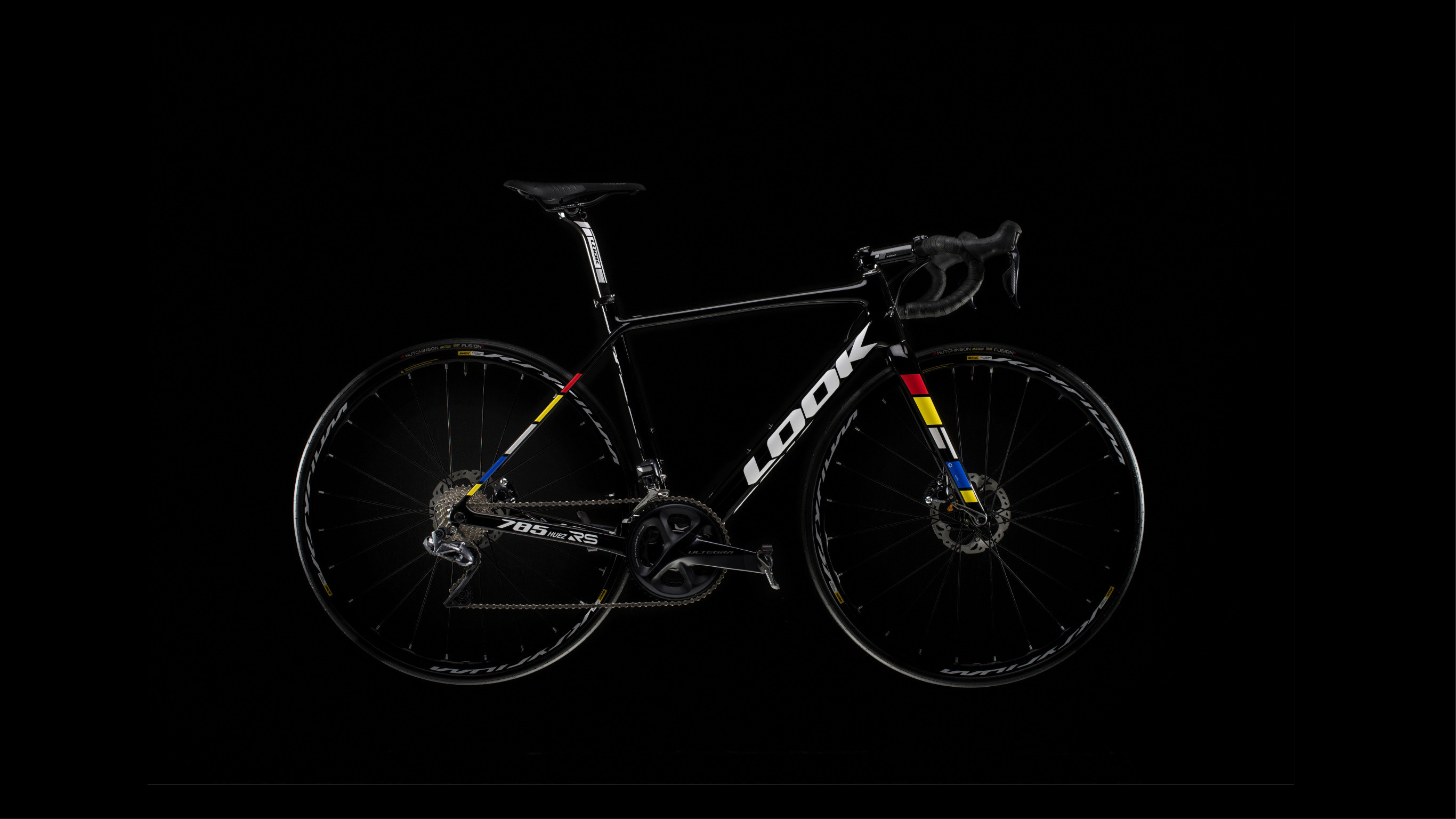
Where and how is your bike produced? It's an important question, and one many bike manufacturers avoid answering.
At LOOK, we are proud of all our production sites, of the men and women who work for us and their exceptional know-how.
We took advantage of a visit from the NIPPO DELKO One Provence Team to immerse you in our world and give you an insight into the manufacturing process of a LOOK bike, from research to completion.
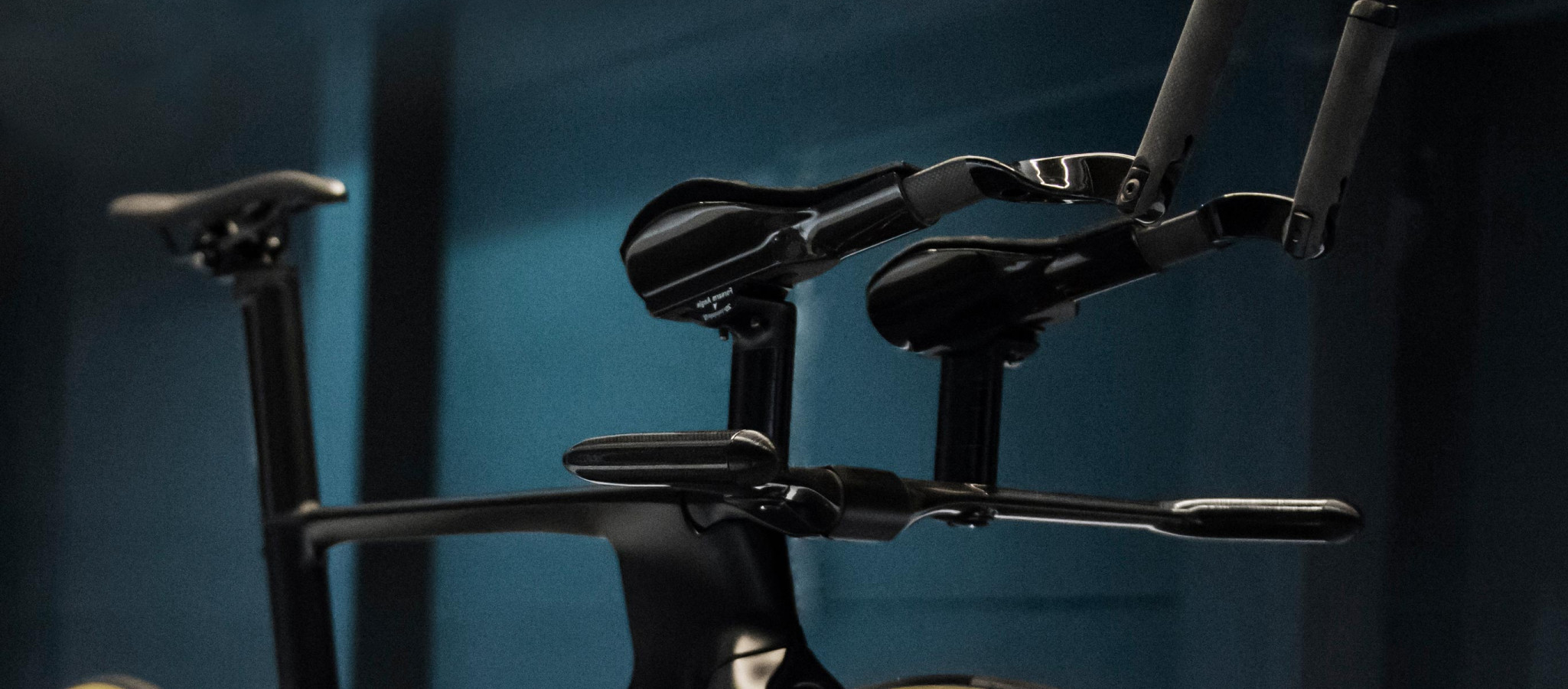
Ready to ride?
A bike may appear quite simple at first glance… and yet, though it weighs but a few kilograms, it is made up of hundreds of parts (the moulding of a frame alone, without any components, requires almost 400 separate carbon pieces).
1. Imagine
Everything begins in our Engineering Department. This is where every new model is born: the result of innovations that have been LOOK's trademark for over 40 years.
Although it is not apparent when you ride your bike, the engineering stage is in fact the longest in the whole creation process. It takes approximately 4 years to imagine and design an innovative bike that is ready to ride.
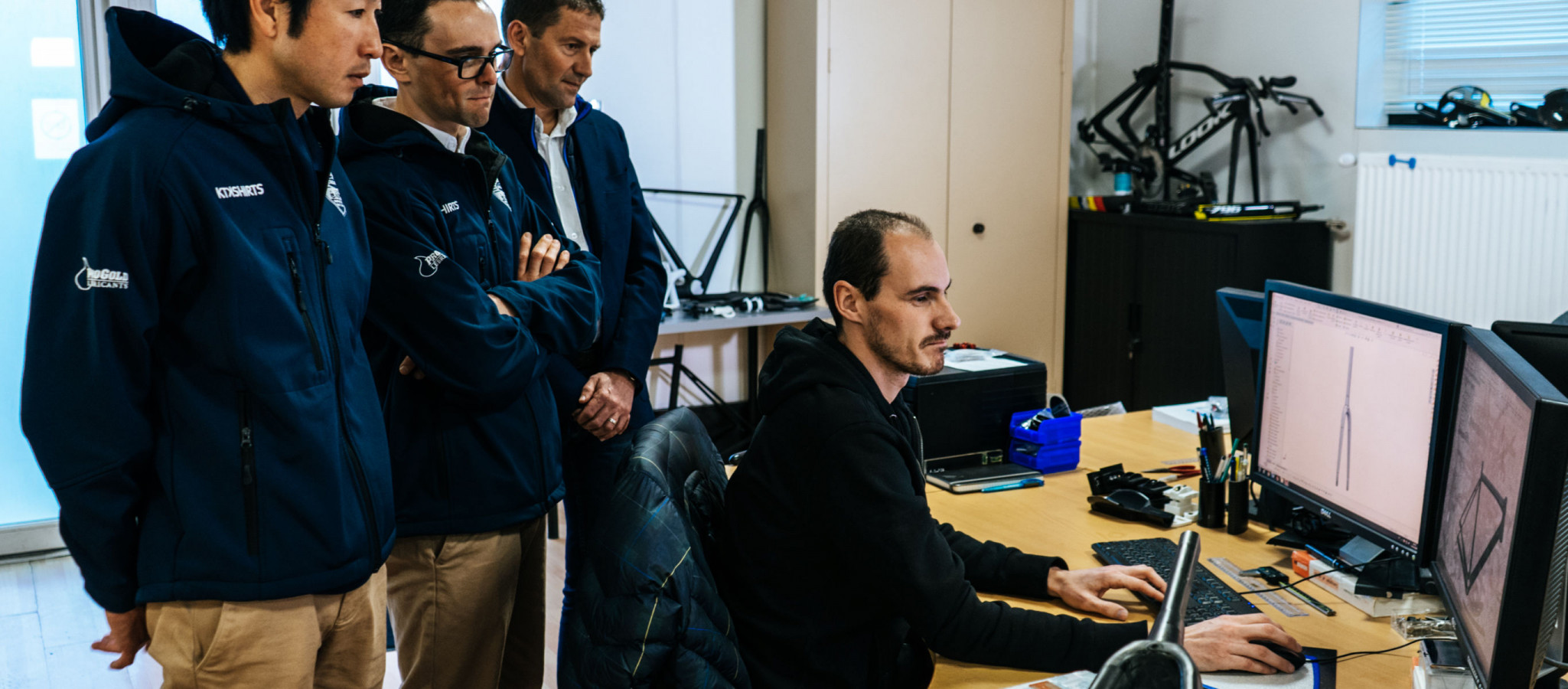
Immersion in the design office
Riders Fumiyuki Beppu and Romain Combaud learning what goes on behind the scenes to produce their 785 HUEZ.
Jérôme, R&D engineer at LOOK, explains the main steps of this long and meticulous process:
• Benchmarking. The Engineering Department analyses the current market, competitors, trends as well as feedback from professional cyclists to gather inspiration and offer innovative, technical solutions that will meet the needs of all riders. These requirements are set down on paper by the Product Manager.
• Geometry. This is the starting point of all designs; creating the most appropriate geometry for a particular bike, following the guidelines set during the benchmarking process.
• Design. Once the geometry and features are identified, the designer gets to work crafting the bike: its curves, shapes, how it looks, its attitude and identity.
• 3D rendering. This stage involves reproducing the designers sketches on industrial design software. The software calculates the technical adjustments that need to be made to the initial design, and generates the plans required by the machines and technicians for the manufacturing process.
• Models. The technical drawings from the 3D renderings allow the engineers to produce the mock-ups. The first are made of resin using 3D printers, then come the aluminium test models. The final models are made of composite materials.
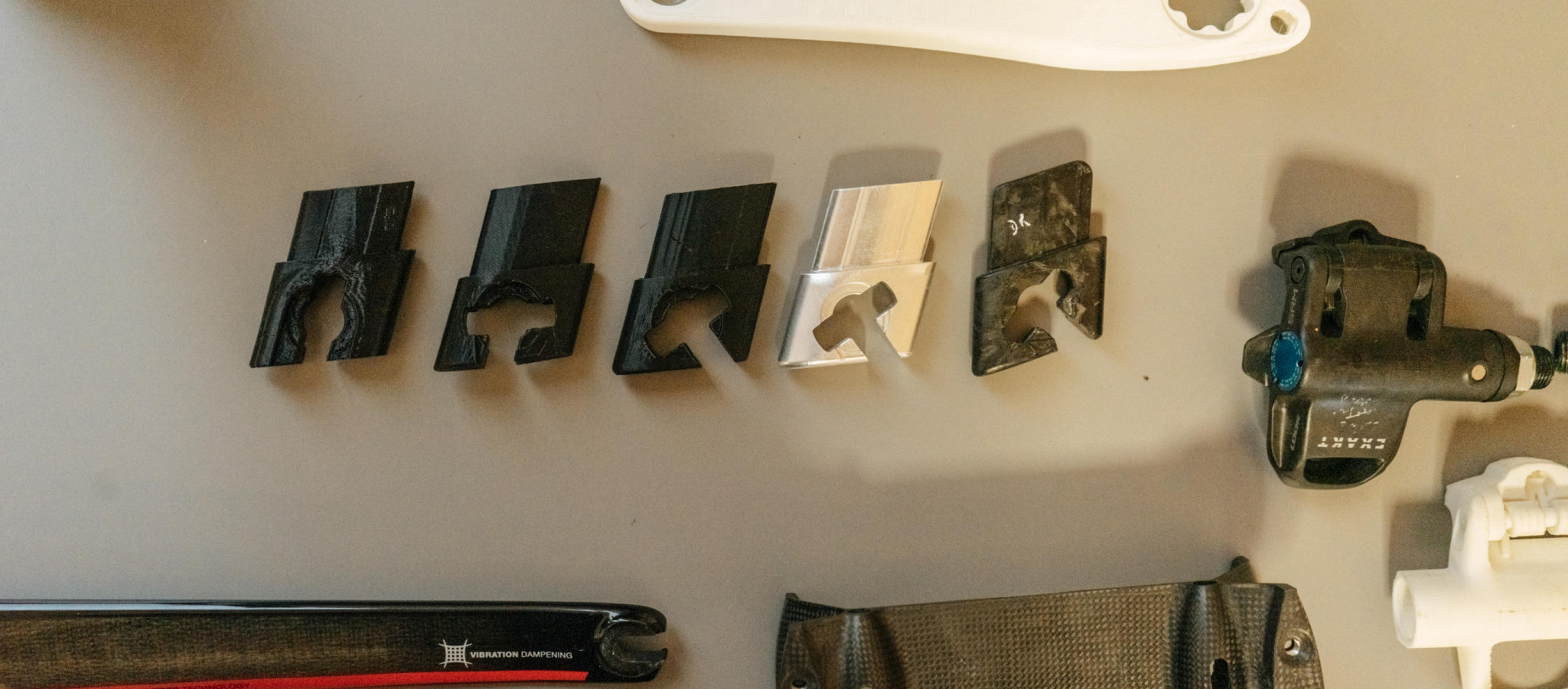
From left to right:
- the first trials with the 3D printer to find the best technical solution...
- the aluminium model for the first tests
- the final composite model
• Composite design. The models have served to define the shape, yet the final composition must now be finalized. It is a crucial phase, as it is the one that will give the bike its soul. The same carbon part can have entirely different properties depending on the type of fibers, their direction, the layup, the shape of the cut, where it is placed, how the layers are combined... there are millions of possibilities!
• Solving an equation with so many variables is the core of LOOK's expertise. It is what we do best. And the result of this complex study will determine some of the bike's key features, such as weight, stiffness, damping capacity and sturdiness.
• Prototypes. It is now time to move on to the full-scale testing: the first moulds are created and the first prototypes are produced in our carbon workshops in Nevers.
• Testing. The prototypes are sent to the "torture chamber": the testing lab, where the future bikes are put through their paces. Field testers also take the prototypes out on the road to check their reliability and performance.
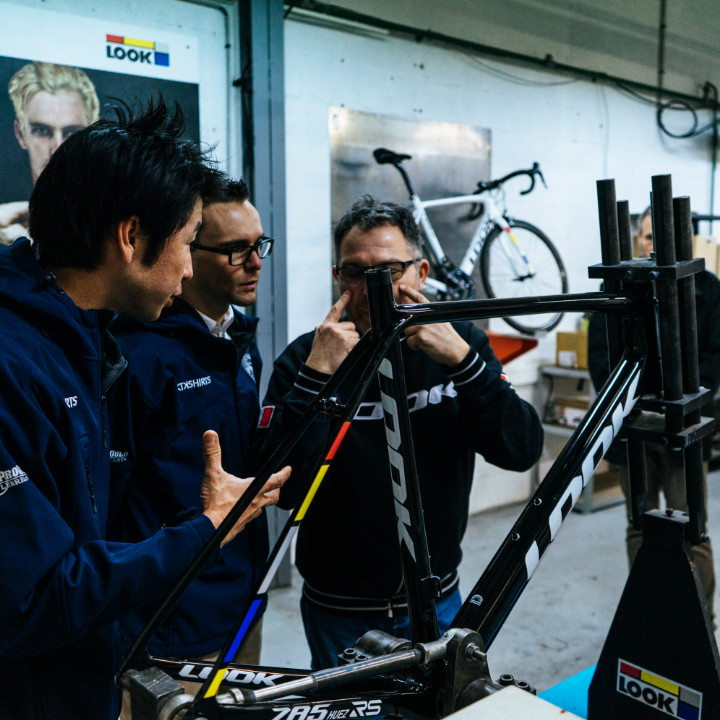
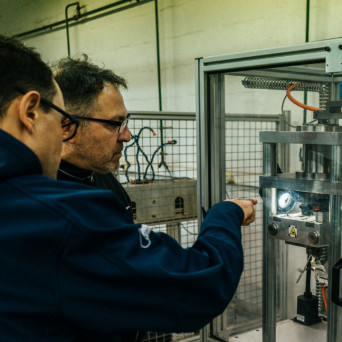
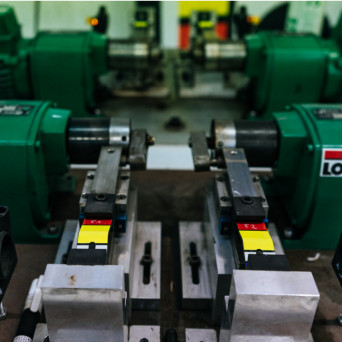
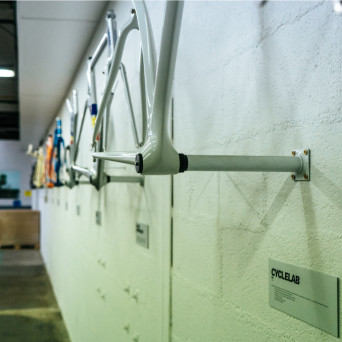
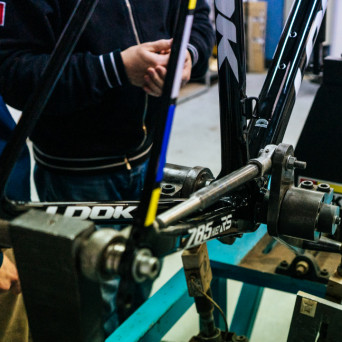
A testing lab is an impressive place, somewhere between a torture chamber and Aladdin's Cave. Imagine the noise of dozens of machines endlessly repeating movements to test the prototypes.
"Many manufacturers outsource these tests, mainly because they do not actually produce the bikes themselves. At LOOK, it is very important for us to keep the Engineering Department as close as possible to the lab," explains Denis. As an industrial engineer, seeing his creations tested to their utmost limits allows him to optimize them down to the very last carbon fiber.
2. Produce
The production process of our 785 Huez is progressing smoothly and the second important stage takes place in the best-guarded area of the plant: the carbon workshop.
Sylvie meets us there. She has been part of the LOOK family for 15 years, and has worked in the carbon workshop for the last 3. The different parts (nearly 400 for the 785 HUEZ RS) are assembled following a highly precise plan: the "layup". There are no machines here, everything is done by hand.
Once the layup is completed, everything is shipped into the next room for moulding and baking.
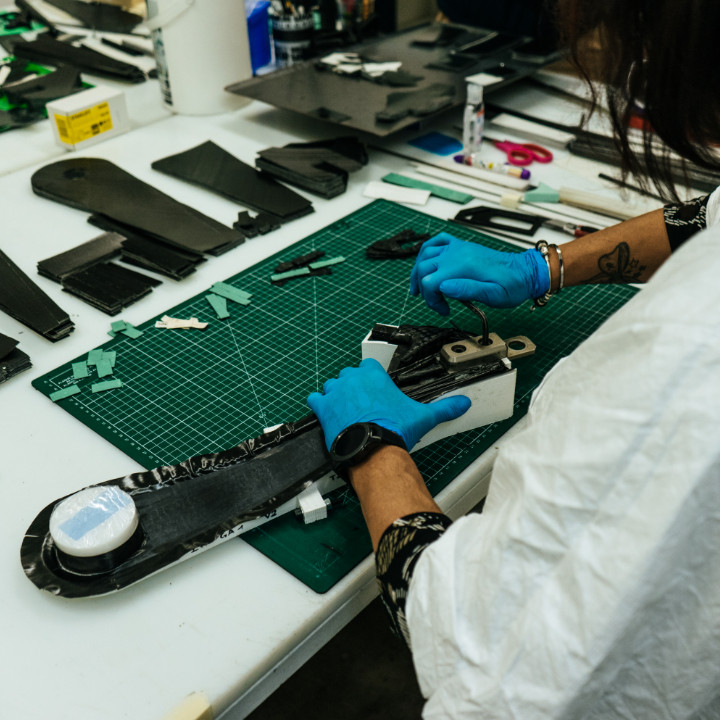
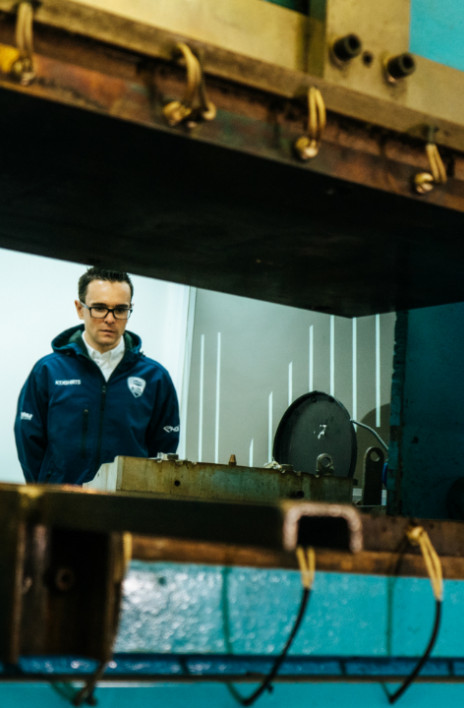
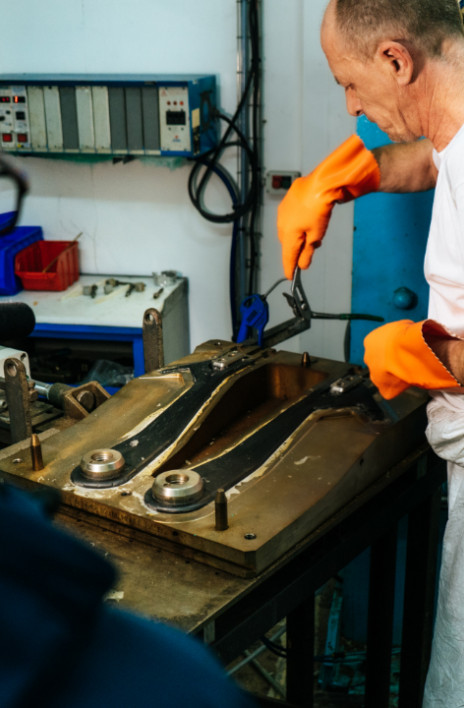
Carbon fiber cutting, layup, moulding and baking.
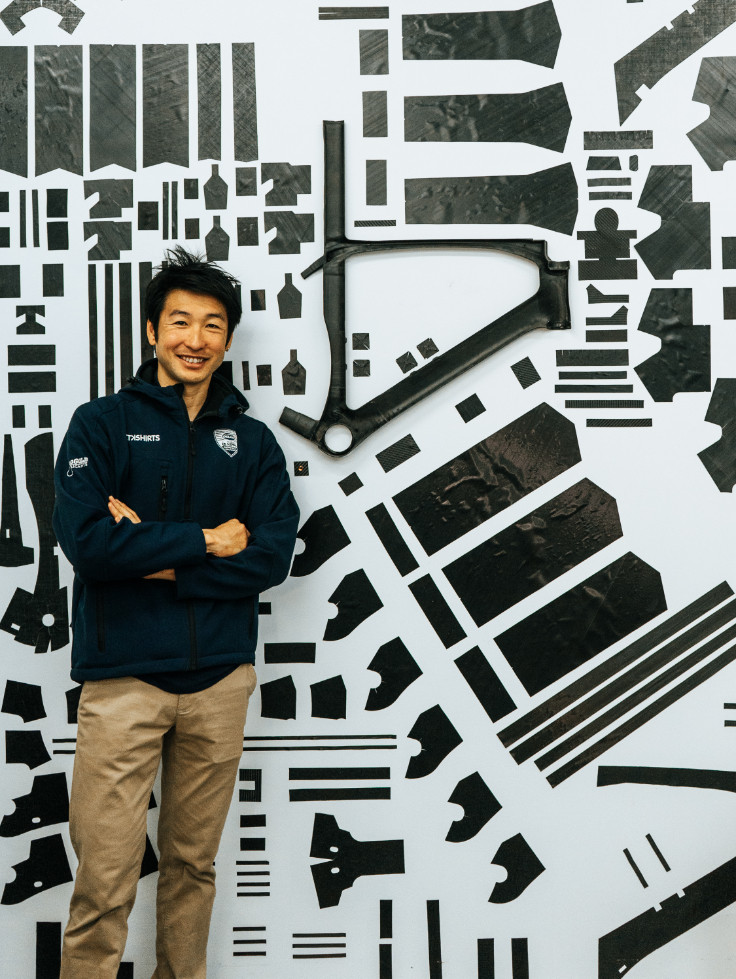
Carbon Core
Fumiyuki Beppu pose in front of the "Carbon Core" wall. This wall represents all the parts necessary to build a composite LOOK frame.
Faced with the complexity of the manufacturing process and the sheer number of parts required to produce a bike, even professional cyclists are impressed.
Fumiyuki Beppu: "It's very impressive. We are professional cyclists, yet we rarely get the opportunity to see how are bikes are actually made. It's important to know where the products we use come from. For example, the 785 we see here is the one I will be riding for Paris-Roubaix. Equipment is crucial in a race like that. The 785 is reactive, the disc version is very sturdy, flexible and comfortable on the cobbles. Seeing all the tests gives you a lot of confidence in the bike."
Romain Combaud:
"I never imagined it would be so complex. When we receive our bikes, everything is set up, we get on and we ride. I never spared a thought for all the development models, the tens of thousands of different parts... I wouldn't like to be the person in charge of managing all that!" (laughs)
The LOOK employees responsibilite for keeping track of all the details work in the sales, scheduling and logistics department. Their roles may be invisible, yet they are an essential part of the bike manufacturing industry.
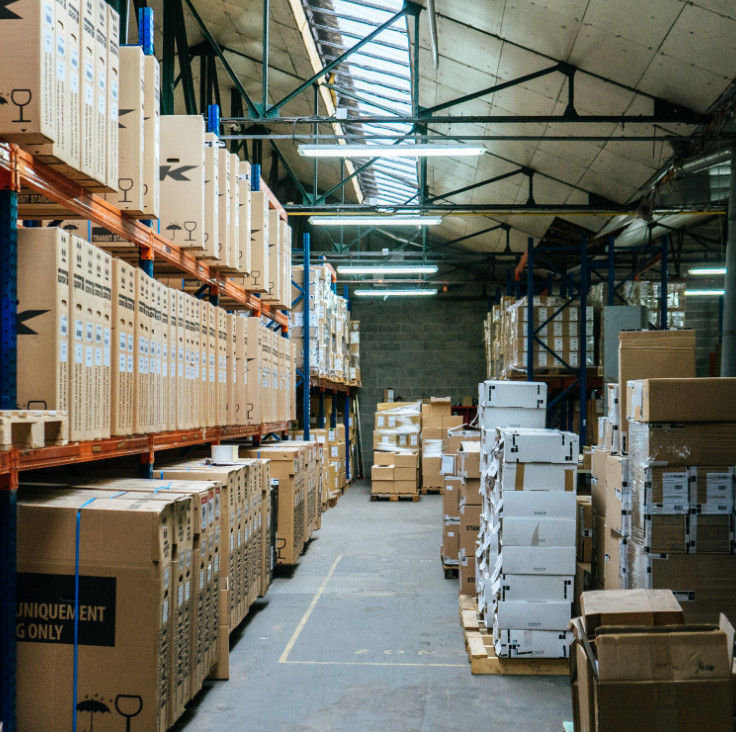
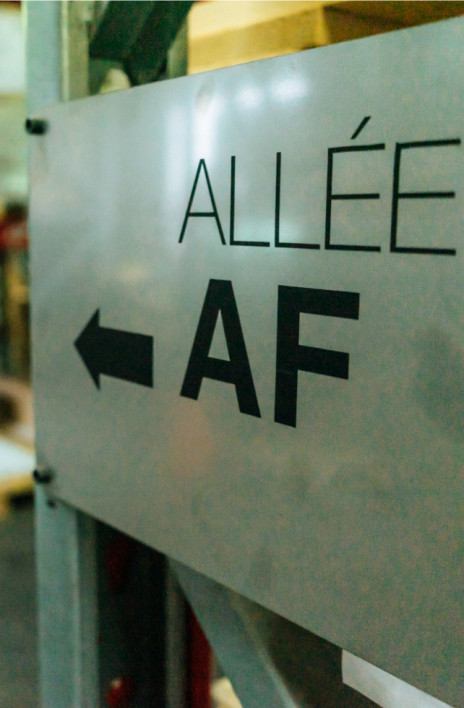
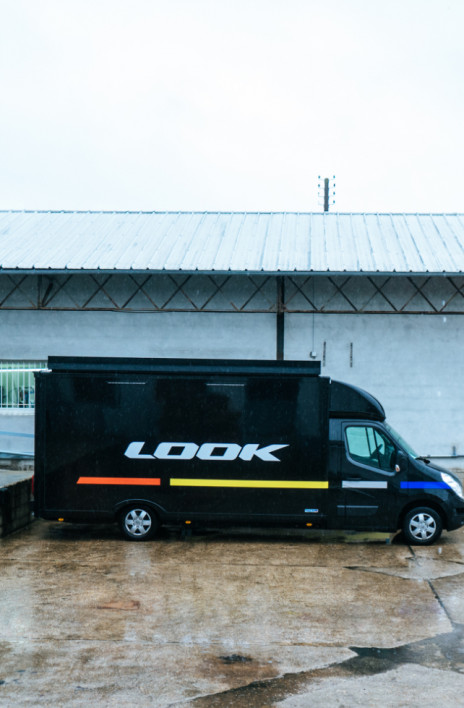
Making bikes is only the beginning… you also have to manage stocks, thousands of parts, transport logistics… an industrial site requires a huge amount of organization and coordination.
3. Finalize
Once the frame is built, it is time for the finishing touches. These are the steps that will take the frame from an anonymous piece of carbon, to a road-worthy bike.
Firstly, a number of composite parts are created to add the spaces and fittings that will accommodate the components (threads, cable routing, final smoothing...).
The frames are then sanded to ensure the surfaces are perfectly smooth before painting and finishing. It is also during this painstaking stage that the carbon quality control is carried out: any frame with a defect or imperfection is rejected.
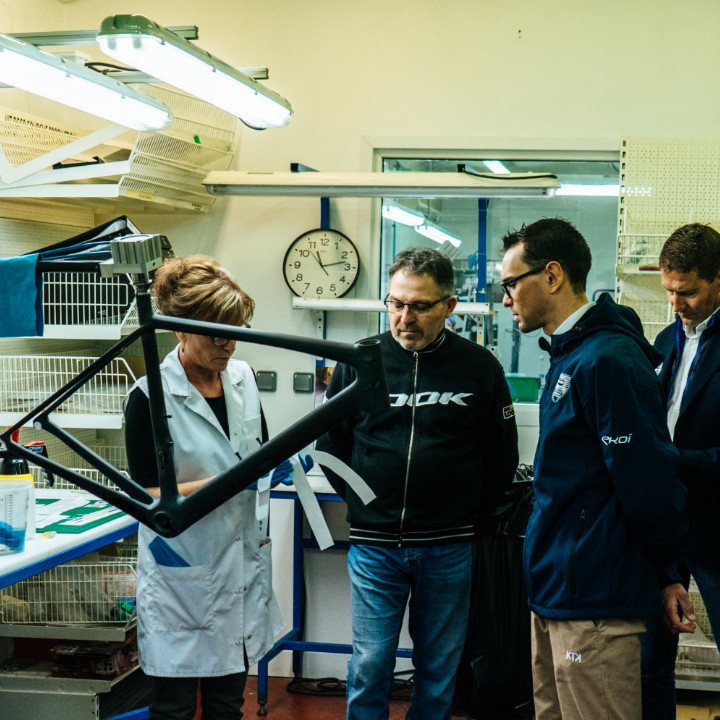
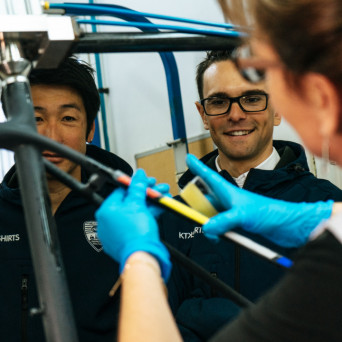
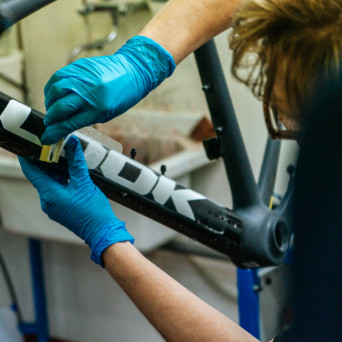
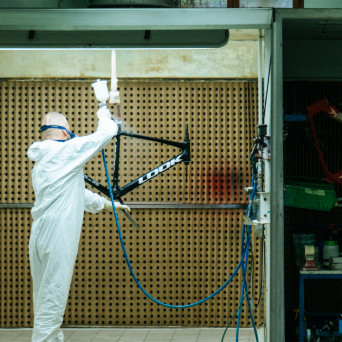
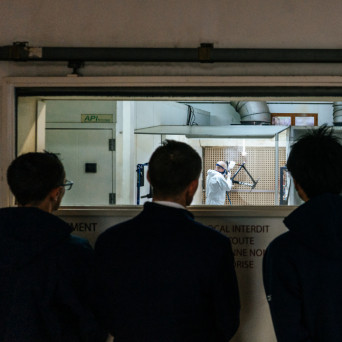
Once the frame has been approved by Quality Control, the aesthetic details are applied. The painters get to work to give each model its catalogue color. The stickers are then meticulously applied (around 30 per frame) before the bike receives a final protective coat of varnish to keep its unique design intact.
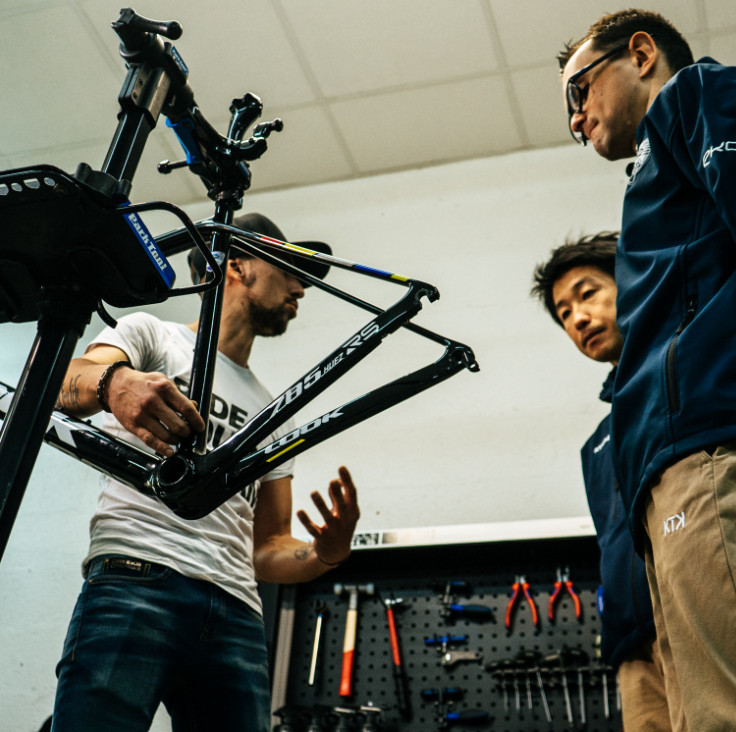
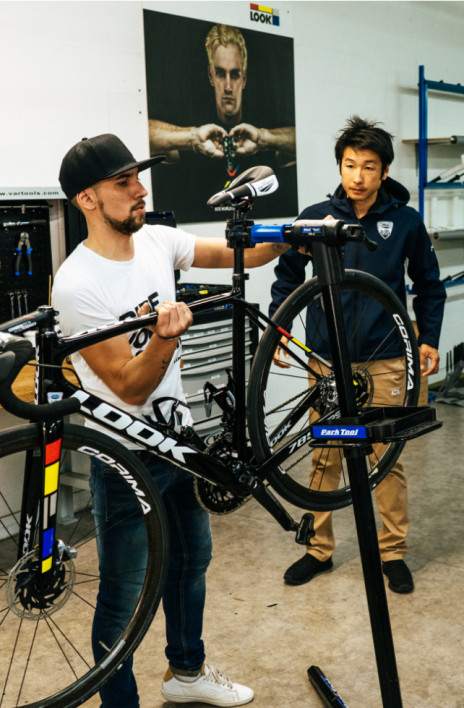
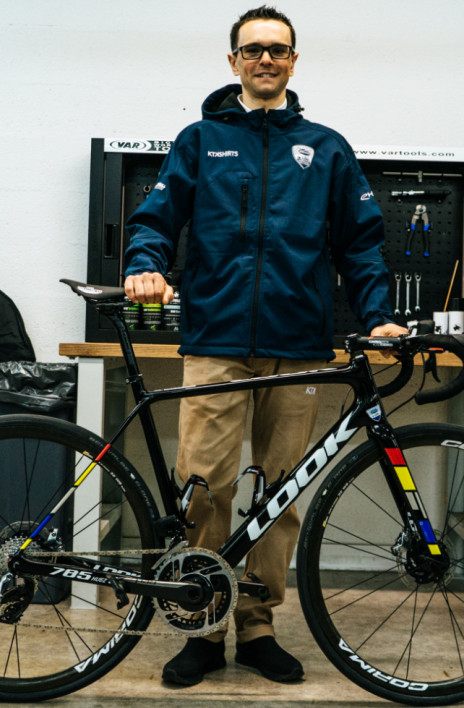
4. Ride
Finally, the very last stage: all the components are mounted so that the frame becomes a bicycle; that incredible, two-wheeled mechanical invention that takes you wherever you wish to go.
For experienced mechanic Olivier, it takes at least two hours (and a few professional tools) to assemble the bike and components to the highest standard.
Romain Combaud shares his impressions as he walks out of the factory, new bike in hand:
"I found it extremely interesting to see the production lines, and especially the design process. Everyone trains in the same way, uses the same nutrition... what matter in the end are the little details: equipment is very important. Here, we see all that happens before we actually sit on the bike. The work these people do is so meticulous and time-consuming. I had never been to a production site before, it's an opportunity many teams don't have."
This short visit highlights the intricacy of our creation processes. No less than thirty different stages (and one secret ingredient*) are necessary to produce a LOOK bike: outline, geometry, benchmarking, design, 3D rendering, models, mold design, composite design, prototypes, lab tests, field tests, cutting, layup, molding, baking, machining, sanding, stickers, varnish, finish, quality control, assembly, storage, delivery, customer service...
Each of these processes is subdivided into smaller steps (hundreds, in some cases). At least 60 hours of work by passionate experts go into every single 785 HUEZ RS produced, excluding design and marketing. This investment is what makes LOOK's DNA.
To be aware of all this means appreciating that the frames we ride have a unique genesis, their very own soul and a real authenticity.
*The special ingredient we have discovered at LOOK is, quite simply, passion. The passion shared by Jérôme and Fred from the Engineering Department, who ride to work every day to test their prototypes themselves. The passion reflected in the eyes of Martine and Sylvie when they support the riders they met at the factory, as they battle for victory at Paris-Roubaix or the Olympics on television. And the passion of all the cyclists who, whenever they swing onto their LOOK bike, know where it comes from, the hands that built it and why they are riding it.